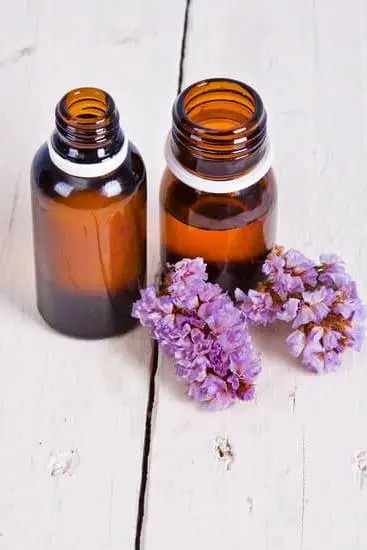Are you looking for a natural way to ease muscle tension and promote relaxation? Look no further than the DIY Aromatherapy Heat Pack.
This article will guide you through the process of creating your very own heat pack infused with soothing essential oils for a truly therapeutic experience. Aromatherapy heat packs are becoming increasingly popular for their ability to provide comfort and relief, and with this step-by-step guide, you can customize your own pack to suit your specific needs.
Aromatherapy heat packs are essentially fabric pouches filled with materials such as rice or flaxseed, along with a blend of essential oils. When heated, these packs release the aromatic benefits of the oils while providing soothing warmth to targeted areas of the body. Not only do they offer relaxation and stress relief, but they also have the potential to alleviate minor pains and aches.
In this comprehensive guide, we will cover everything you need to know about DIY aromatherapy heat packs – from choosing the right materials and creating custom scent blends, to using and caring for your homemade heat pack. Whether you’re new to aromatherapy or an experienced enthusiast, this article will help you harness the power of essential oils in a convenient and cost-effective way.
Get ready to embark on a journey towards holistic well-being through the art of creating your very own aromatherapy heat pack.
Choosing the Right Materials
When creating a DIY aromatherapy heat pack, it’s important to choose the right materials to ensure the effectiveness and safety of the final product. The materials needed for a DIY aromatherapy heat pack are easily accessible and include fabric, filling material, and essential oils.
For the fabric, it’s best to use natural fibers such as cotton or linen as they are breathable and can hold heat well. These fabrics can typically be found at craft stores or fabric shops. Additionally, it’s important to choose a filling material that can retain heat, such as rice, flax seeds, or cherry pits. These can also be found at most craft stores or purchased online from various retailers.
When selecting essential oils for the heat pack, consider scents that promote relaxation and stress relief, such as lavender, chamomile, or eucalyptus. Essential oils can be purchased from health food stores, specialty wellness shops, or online retailers. It’s important to choose high-quality essential oils to maximize the therapeutic benefits of the aromatherapy heat pack.
Lastly – tips for selecting fabrics and essential oils:
- Choose natural fibers like cotton or linen for breathability
- Select filling materials that retain heat such as rice or cherry pits
- Use high-quality essential oils known for their relaxing properties like lavender and chamomile
These tips will help ensure that your DIY aromatherapy heat pack is both effective and safe for use in promoting relaxation and stress relief.
| Material | Where to Find |
|---|---|
| Natural fiber fabric (cotton or linen) | Craft stores or fabric shops |
| Filling material (rice, flax seeds, cherry pits) | Craft stores or online retailers |
| Essential oils (lavender, chamomile, eucalyptus) | Health food stores, specialty wellness shops |
Step-by-Step Guide to Making a DIY Aromatherapy Heat Pack
Making your own DIY aromatherapy heat pack can be a fun and rewarding project that allows you to personalize the scent and fabric to suit your preferences. Here is a simple step-by-step guide to creating your own heat pack:
- Choose your fabric: Select a soft, durable fabric such as cotton or flannel for the outer layer of your heat pack.
- Measure and cut: Determine the size of the heat pack you want, and carefully measure and cut two identical pieces of fabric to that size.
- Sew the edges: Place the two fabric pieces together with the patterned sides facing inwards, then sew around three sides, leaving one side open for filling.
- Fill with rice and essential oils: Fill the pouch with uncooked rice and a few drops of your chosen essential oil blend.
- Sew closed: Once filled, carefully stitch the open edge closed to seal in the rice and oils.
By following these steps, you can create a custom aroma therapy heat pack that meets your specific needs for relaxation and stress relief.
Not only does making your own DIY aromatherapy heat pack allow you to control every aspect of its creation, but it also provides an eco-friendly, cost-effective alternative to purchasing pre-made options. Whether you are experienced in crafting or completely new to making homemade items, creating an aromatherapy heat pack is a simple project with many benefits for well-being.
Different Aromatherapy Blend Options
Aromatherapy heat packs can offer a range of benefits, including relaxation, stress relief, and comfort. One of the key components in creating the perfect aromatherapy heat pack is choosing the right essential oil blend. Different essential oils have different properties and can aid in various aspects of wellness. Some popular options for aromatherapy blends include lavender and chamomile for relaxation, eucalyptus and peppermint for sinus relief, and citrus oils like lemon or orange for an energy boost.
When creating a DIY aromatherapy heat pack, it’s essential to consider the desired outcome and select the appropriate essential oil blend. For example, if you are looking for relief from stress or anxiety, a blend of lavender, chamomile, and ylang-ylang can be very effective. On the other hand, if you’re dealing with muscle pain or tension headaches, a combination of peppermint and eucalyptus may be more suitable.
Additionally, some individuals may have specific scent preferences or sensitivities that should be taken into account when choosing an essential oil blend for their DIY aromatherapy heat pack. It’s important to test out different combinations to find the perfect balance that resonates with your personal needs and preferences.
| Essential Oil Blend | Benefits |
|---|---|
| Lavender & Chamomile | Relaxation and stress relief |
| Eucalyptus & Peppermint | Sinus relief and headache relief |
| Lemon & Orange | Natural energy boost |
How to Use the Aromatherapy Heat Pack
Aromatherapy heat packs are a wonderful way to relieve stress and promote relaxation. Once you have created your own DIY aromatherapy heat pack, it’s important to know how to use it effectively for maximum benefit. Here are some tips and guidelines for using your homemade heat pack:
- Instructions for heating the pack
- Tips for applying and using the heat pack for maximum relaxation and stress relief
- Safety precautions and guidelines for use
Aromatherapy heat packs can typically be heated in the microwave for a couple of minutes or placed in the oven at a low temperature for a short amount of time. Be sure to follow the specific heating instructions that came with your heat pack to avoid overheating.
After heating, place the heat pack on areas of tension or discomfort, such as your neck, shoulders, or lower back. The gentle warmth combined with the soothing scent of essential oils can help to relax muscles and calm the mind.
It’s important to use caution when using a heated aromatherapy pack. Always test the temperature of the pack before applying it to your skin to avoid burns or discomfort. Additionally, be mindful of any allergies you may have to specific essential oils used in the pack.
Using your DIY aromatherapy heat pack is an excellent way to practice self-care and unwind after a long day. By following these simple guidelines, you can enjoy all of the benefits that come with using this natural relaxation tool.
In addition to stress relief, aromatherapy heat packs can also be used as a form of therapy for muscle pain or stiffness. Whether you’re experiencing sore muscles after exercising or dealing with tension from sitting at a desk all day, applying your DIY aromatherapy heat pack can provide calming relief for those affected areas. Always consult with your healthcare provider if you have any concerns about using heat therapy as part of your pain management routine.
Ultimately, incorporating an aromatherapy heat pack into your daily routine is a simple way to invest in your overall well-being. Whether you choose to use it while winding down in the evening, during moments of self-care on weekends, or even throughout busy workdays, taking advantage of its relaxing properties can make a big difference in how you manage stress and prioritize personal wellness.
Benefits of DIY Aromatherapy Heat Packs
Making a DIY aromatherapy heat pack offers many benefits beyond just the stress-relief and relaxation properties that come with using it. In this section, we’ll explore the advantages of creating your own heat pack, as well as the cost-effectiveness, customization options, and environmental benefits that come with DIY aromatherapy heat packs.
Cost-Effectiveness and Customization
One of the primary benefits of making your own aromatherapy heat pack is the cost-effectiveness and customization it offers. By sourcing your own materials and essential oils, you can create a heat pack tailored to your personal preferences at a fraction of the cost of store-bought options. Additionally, you have full control over the size, shape, and scent of the heat pack, allowing you to customize it to best suit your needs for relaxation and stress relief.
Environmental Benefits
Opting to make a DIY aromatherapy heat pack also presents environmental benefits. By creating your own reusable heat pack, you reduce waste from disposable options while also having the flexibility to use eco-friendly materials in its construction. This reduces the overall environmental impact compared to purchasing single-use heat packs repeatedly. Making your own heat pack allows for sustainable choices that benefit both you and the planet.
Personalized Touch
Another advantage of DIY aromatherapy heat packs is the personalized touch they offer. Whether you’re gifting them to friends or family members or simply enjoying them yourself, creating your own heat pack allows for a special level of care and attention that can’t be replicated by store-bought alternatives. You can infuse them with scents that hold personal meaning or create custom blends tailored to specific needs for an added personal touch.
Aromatherapy Heat Pack Care and Maintenance
Aromatherapy heat packs are not only great for relaxation and stress relief, but they also require proper care and maintenance to ensure they last a long time and continue to provide their therapeutic benefits. By taking the time to properly clean, store, and refresh your DIY aromatherapy heat pack, you can prolong its lifespan and keep it in good condition for repeated use.
Tips for Cleaning and Storing Your Aromatherapy Heat Pack
To keep your aromatherapy heat pack clean, it is important to remove any removable cover and wash it according to the fabric’s care instructions. For the inner heat pack, spot cleaning with a damp cloth and mild detergent is usually sufficient. It is important to make sure the pack is completely dry before using it again. When not in use, store the heat pack in a cool, dry place away from direct sunlight and moisture.
How to Refresh the Scent of Your Heat Pack Over Time
Over time, the scent of essential oils infused in the heat pack may fade. To refresh the scent, simply add a few drops of your chosen essential oil blend onto the fabric or rice filling of the heat pack. You can do this whenever you feel like the scent is weakening or needs a boost.
Prolonging the Lifespan of Your Aromatherapy Heat Pack
To extend the lifespan of your DIY aromatherapy heat pack, handle it with care when heating or using it. Avoid overheating or exposing it to excessive pressure or force that could damage its integrity. By following these simple care and maintenance tips, you can enjoy your homemade aromatherapy heat pack for a long time while reaping its relaxing and stress-relieving benefits.
Creative Uses for Aromatherapy Heat Packs
In conclusion, DIY aromatherapy heat packs offer a multitude of benefits and creative uses beyond just relaxation and stress relief. By making your own heat pack, you have the opportunity to customize the materials, essential oils, and design to suit your specific needs.
Not only is it cost-effective, but it also allows for environmental benefits over disposable options. Additionally, the creative potential of these heat packs extends beyond their traditional use, as they can be incorporated into daily routines in various ways.
One of the key advantages of creating your own aromatherapy heat pack is the ability to personalize it according to your preferences. Whether you prefer a specific fabric or enjoy experimenting with different essential oil blends, DIY allows for customization that may not be available with store-bought options. This level of personalization enhances the overall experience and effectiveness of using the heat pack for relaxation and stress relief.
Furthermore, individuals have found creative ways to incorporate their DIY aromatherapy heat packs into their daily routines. Some have used them as natural air fresheners by placing them in closets or drawers, while others have utilized them as a soothing comfort during meditation or yoga practices. The versatility of these heat packs speaks to their value beyond just providing warmth and aroma therapy. With proper care and maintenance, these homemade creations can continue to serve a variety of creative purposes.
Frequently Asked Questions
How to Make Aromatherapy Heating Pads?
Making aromatherapy heating pads is a simple DIY project. You can start by choosing a fabric and cutting it to your desired size, then sew three sides together to create a pouch.
Fill the pouch with rice, flax seeds, or wheat berries, along with your choice of dried herbs or essential oils for fragrance. Then, sew the final edge to close the pouch and heat it in the microwave for soothing warmth.
What Is the Best Filling for Heat Bags?
The best filling for heat bags depends on personal preference and intended use. Some popular fillings include rice, which holds heat well and provides weight for pressure therapy; flax seeds, known for their ability to retain heat; and cherry pits, which also maintain warmth and emit a faint cherry scent when heated.
What Can I Put in a Homemade Heat Pack?
Homemade heat packs can be filled with a variety of materials commonly found at home. Rice, oatmeal, barley, or lentils are popular options due to their ability to retain heat.
Additionally, dried herbs such as lavender or chamomile can be added for a natural fragrance that enhances relaxation. It’s important to choose fillings that provide consistent warmth and are safe for heating in the microwave.

Are you looking for a natural way to improve your health and wellbeing?
If so, aromatherapy may be the answer for you.





